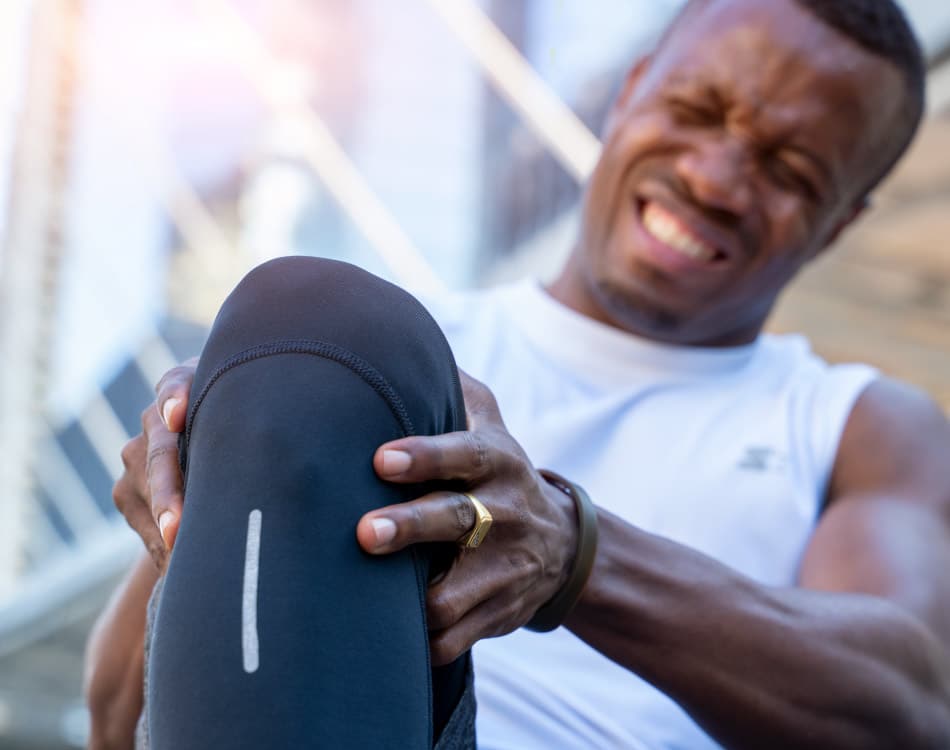Anyone who lifts weights will know the dull pain we often experience in our muscles the day after a hard session or following time away from the gym.
This feeling is usually most noticeable 12-48 hours after the session but in severe cases, some soreness and tenderness can persist for up to a week.
This common sensation is known as delayed onset muscle soreness (DOMS), but the exact cause of this condition has been hard for exercise scientists to pinpoint.
Early theories suggested that a build-up of lactic acid caused DOMS. However, more recent theories suggest that exercise causes damage to muscle fibres and connective tissues and the resultant inflammatory response to this micro-trauma causes the soreness and pain.
The main hypothesized DOMS theories include:
- Lactic acid
- Muscle damage
- Inflammation
- Connective tissue damage
- Enzyme efflux
READ MORE | Why You Should Train For The ‘Lactic Acid Burn’ More Often
Lactic acid theory
Lactic acid levels increase shortly after exercise, which led researchers to believe that these molecules were a primary cause of DOMS.
However, later studies discredited this theory after proving that that lactic acid levels return to pre-exercise levels within an hour after exercise.
As such, it cannot serve as the primary molecule driving the DOMS process at its peak. Additionally, research shows that concentric exercise, which shortens muscles and involves greater metabolism, fails to produce DOMS.
Having said that, while lactic acid is not the major driver, it may contribute to the acute pain associated with fatigue after an intense gym session and may serve as trigger for DOMS.
READ MORE | Does Your Workout Need Aminos?
Muscle damage and inflammation theory
Many studies confirm that weight training causes muscle damage, which results in inflammation after exercise. For these reasons, these theories are the most commonly accepted causes of DOMS.
However, several subsequent reports have identified a disconnect between the time course of the damage, degenerative changes and inflammation, which do not always align exactly with the natural progression of DOMS.
READ MORE | Change The Recovery Game
Connective tissue damage theory
According to this theory, the reason for the pain is the body’s immune response to the damage that occurs to the connective tissue that binds muscle fibres together, not in the actual muscle fibres themselves.
This damage releases various chemicals and other substances into the chemical environment surrounding the muscle cell, which results in inflammation and creates the sensations of sensitivity or pain.
READ MORE | Don’t Skimp On Recovery, It’s Vital For Peak Sporting Performance
Enzyme efflux theory
The enzyme efflux theory suggests that calcium held in the fluid that fills the spaces between cells (called interstitial liquid) accumulates in injured cells.
This build-up impacts metabolism and activates enzyme activity that causes further damage by degrading contractile proteins, potentially resulting in the pain we experience.
READ MORE | Next-Level Crossfit Recovery
An integrated model
As each theory has at least some merit, and inflammation is a common denominator in most of them, the actual cause is likely an integration of two or more theories with inflammation a primary driver.
Ongoing research seems to suggest that the next-day muscle soreness we experience stems from a cascade of physiological effects in response to microscopic trauma sustained during intense exercise, including inflammation in muscle and connective tissues in response to the micro-trauma.
We also know that performing new or unfamiliar exercises, eccentric (lengthening a muscle under load) exercise, or significantly increasing your training load, intensity or volume can cause more severe DOMS.
Also, untrained athletes also tend to suffer more severe DOMS than well-trained or seasoned athletes.















